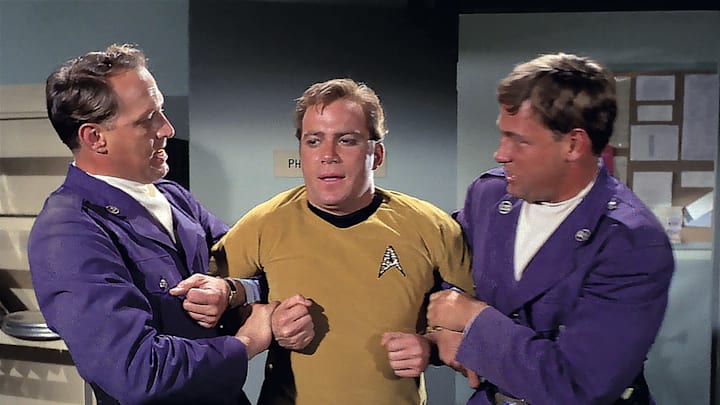Star Trek: The Original Series was the lead show for the franchise, and though there were plenty of bumps and bruises along the way, it made it to three seasons, becoming popular in reruns. That, of course, led to the potential Star Trek: Phase II series which, in turn, became Star Trek: The Motion Picture. As the popularity of Star Trek grew, a new series with a new crew set aboard the Enterprise became a reality, but before that could take place, there were some issues that David Gerrold, the writer of The Trouble with Tribbles, pointed out. [via ForgottenTrek.com]
The first problem Gerrold mentioned was the captain always going away on dangerous missions. It wasn't wise to put the leader of the ship in peril every episode. The planning of Star Trek Phase II introduced a first officer who could beam down to the planets with an away team. This resolved the issue and kept the captain safe. And Star Trek: The Next Generation introduced Commander William Riker who was Captain Picard's second-in-command, or Number One, rather.
Gerrold also noted that the Enterprise had constant technological issues, which were used for plot devices. He specifically mentioned the transporter, which we all know Dr. Leonard "Bones" McCoy hated. Star Trek creator, Gene Roddenberry, addressed that in the writer's guide for The Next Generation saying that "story believability demands that our twenty-fifth-century technology be at least as capable as our twentieth-century technology in this area.”
And the third issue Gerrold mentioned was the crew members being so far away from their families for long stretches of time. How did they endure that? Every crew member couldn't be single and/or have no relatives missing them. And thus, the family-friendly Enterprise for The Next Generation was introduced. Robert Justman proposed the idea of bringing families aboard, and Roddenberry approved, wanting this Enterprise to be more of a "city in space" than a "battleship."
Since The Next Generation, other Star Trek series have ventured back into the ways that The Original Series did things, with the captain still beaming down in the throes of danger more often than they should. But, with the exception of Star Trek: Enterprise, the starships have been bigger, brighter, and more welcoming for families. Technology has advanced, again, Star Trek: Enterprise notwithstanding, and except for a warp core issue now and again, there is less focus on problems with the ship and more with the enemies outside the hull.
